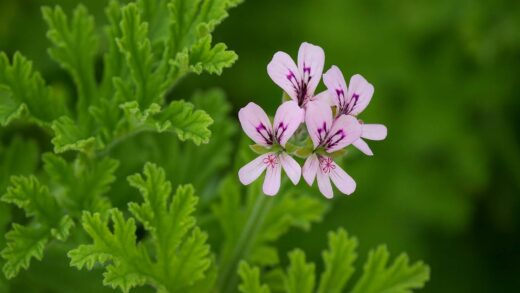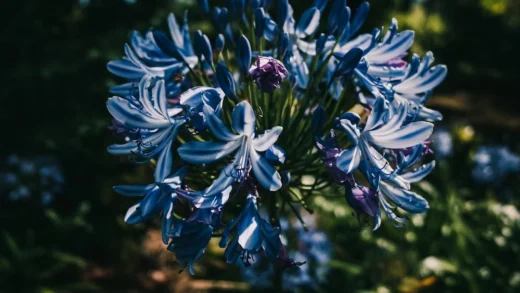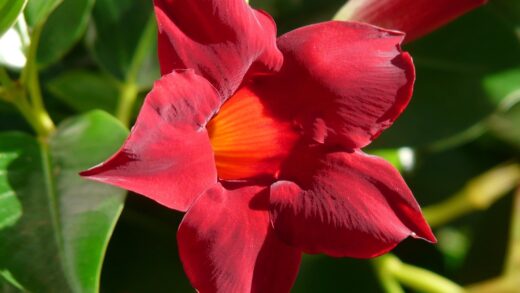Understanding the unique needs of the Banat peony is the first step toward cultivating a thriving and spectacular specimen in your garden. This rare and protected subspecies demands a thoughtful approach, one that mimics its native habitat in the sandy, loess soils of the Pannonian Basin. Unlike many of its more common peony cousins, it possesses a distinct set of requirements for soil, light, and moisture that are critical to its long-term health and profuse blooming. Success with this plant is not merely a matter of chance but a rewarding journey of observation and precise care. It is a commitment to preserving a piece of natural heritage, a living jewel that brings a touch of wild elegance to any dedicated gardener’s collection.
The foundation of successful cultivation lies in providing the correct soil composition, which is paramount for the health of the plant’s sensitive root system. The Banat peony thrives in well-drained, sandy, or loamy soils with a slightly alkaline to neutral pH. Heavy clay soils that retain excessive moisture are the primary enemy, leading to root rot and other fungal diseases to which this subspecies is particularly susceptible. Before planting, it is highly advisable to amend the soil with generous amounts of coarse sand and organic compost to improve its structure and drainage. This initial soil preparation creates an environment where the tuberous roots can breathe and expand without the stress of waterlogged conditions.
Consistent and appropriate care throughout the growing season will ensure the plant remains vigorous and resilient. While established plants exhibit a good degree of drought tolerance, they benefit from regular watering during prolonged dry spells, especially in the spring when buds are forming. However, the golden rule is to allow the soil to dry out between waterings, preventing the dreaded root rot. A layer of organic mulch, such as pine bark or straw, can help conserve soil moisture and suppress weed growth, but it should be kept away from the immediate crown of the plant to avoid trapping moisture and encouraging fungal issues. This simple practice helps maintain a stable root environment, buffering against extreme temperature fluctuations.
As the season progresses, attention must be paid to the plant’s foliage and overall vigor. After the spectacular but brief blooming period in late spring, the foliage remains an attractive feature for several months. It is crucial to allow the leaves to die back naturally in the autumn, as this is the period when the plant is actively storing energy in its roots for the following year’s growth and flowering. Prematurely cutting back the foliage can significantly weaken the plant and reduce its blooming capacity. During this time, monitor for any signs of disease or pest infestation, addressing any issues promptly to prevent them from spreading.
Finally, the long-term success of the Banat peony hinges on a philosophy of minimal but mindful intervention. This is not a plant that responds well to frequent disturbance, such as transplanting or excessive division. Once happily established in a suitable location, it is best left undisturbed for many years, allowing it to mature into a magnificent clump. The annual cycle of care should be one of gentle support: providing the right soil foundation, ensuring adequate but not excessive moisture, allowing the foliage to complete its natural cycle, and protecting it from pests and diseases. This patient and respectful approach will be rewarded with an annual display of breathtaking beauty that is all the more precious for its rarity.
More articles on this topic
Soil preparation and site selection
Choosing the perfect location is the most critical decision you will make when cultivating the Banat peony. This plant requires a spot that receives full sun for at least six to eight hours a day, as ample sunlight is essential for robust growth and prolific flowering. An open, airy location is also beneficial as it promotes good air circulation around the plant, which helps to dry the foliage quickly after rain and reduces the risk of fungal diseases like botrytis. Avoid planting near large trees or shrubs that will compete for sunlight, water, and nutrients, as the peony will invariably struggle in such company. The ideal site is one that offers protection from strong, damaging winds, which can break the delicate flower stems.
Once you have identified the ideal sunny and sheltered location, the focus must shift to meticulous soil preparation. The Banat peony has an absolute intolerance for “wet feet,” meaning soil that remains waterlogged for extended periods. Excellent drainage is not just a preference; it is a prerequisite for survival. The native habitat consists of sandy loess soils, so your goal is to replicate these conditions as closely as possible. If your garden has heavy clay soil, significant amendment is necessary. You should excavate a planting area at least twice the width and depth of the root ball and incorporate generous quantities of coarse sand, perlite, or fine gravel to improve the soil structure and porosity.
Beyond drainage, the soil’s pH and nutrient content play a vital role in the plant’s ability to thrive. The Banat peony prefers a neutral to slightly alkaline soil pH, typically in the range of 6.5 to 7.5. It is wise to conduct a soil test before planting to determine the existing pH and make adjustments if necessary. If the soil is too acidic, you can amend it with dolomitic lime or wood ash to raise the pH to the appropriate level. Incorporating well-rotted compost or leaf mold will not only improve the soil structure but also provide a slow-release source of essential nutrients, giving the plant a healthy start without the shock of strong chemical fertilizers.
Creating the final planting hole is the last step in this crucial preparation phase. The hole should be wide enough to accommodate the entire root system without bending or cramping the fleshy roots. A general guideline is to dig a hole approximately 50 centimeters wide and deep. Backfill the hole with the amended soil mixture, creating a small mound in the center upon which the root crown will rest. This careful and deliberate preparation of the planting site is the single most important investment you can make in the long-term health and spectacular floral display of your Banat peony, ensuring it has the perfect foundation to flourish for decades.
More articles on this topic
Watering and moisture management
Mastering the art of watering the Banat peony is a delicate balance between providing sufficient moisture for growth and avoiding the ever-present danger of overwatering. During the active growing season in spring, when the plant is developing its foliage and forming flower buds, consistent moisture is crucial. A deep watering once a week is generally sufficient, depending on your climate and soil type. The goal is to moisten the entire root zone thoroughly, encouraging the roots to grow deep into the soil rather than remaining shallow. This practice helps the plant become more resilient and drought-tolerant over time. Always check the soil moisture before watering; if the top few centimeters are still damp, it is best to wait another day or two.
As the season transitions into summer after the blooming period has concluded, the plant’s water requirements begin to decrease. The foliage will remain green and photosynthesize, storing energy for the next season, but the plant is not in a state of vigorous growth. During this time, you should reduce the frequency of watering, allowing the soil to dry out more thoroughly between applications. In most temperate climates, natural rainfall may be sufficient to meet the plant’s needs during the summer months. However, during extended periods of drought or extreme heat, a supplemental deep watering every two to three weeks will prevent the plant from becoming stressed and ensure the roots remain healthy and hydrated.
The method of watering is just as important as the frequency to prevent the onset of fungal diseases. It is essential to apply water directly to the base of the plant, at the soil level, rather than overhead. Wetting the foliage, especially in the dense center of the plant, creates a humid environment that is ideal for the development of fungal pathogens like botrytis blight and powdery mildew. Using a soaker hose or a drip irrigation system is an excellent way to deliver water directly to the root zone efficiently and without wetting the leaves. If you must water by hand, do so in the morning so that any incidental splashing on the leaves has ample time to dry in the sun.
In the autumn, as the foliage begins to yellow and die back, the plant’s need for water diminishes significantly. It is entering its dormant period, and excessive moisture at this time can be particularly harmful, promoting rot in the dormant roots. You should cease all supplemental watering once the autumn rains begin or as the weather cools down. The soil should be allowed to enter the winter period on the drier side. Proper moisture management throughout the year, tailored to the plant’s growth cycle, is a cornerstone of preventative care and is fundamental to raising a robust and disease-free Banat peony.
Fertilization and nutrient supply
Providing the Banat peony with the appropriate nutrients is essential for vigorous growth and abundant flowering, yet it requires a gentle and measured approach. This subspecies is not a heavy feeder, and excessive fertilization can be more detrimental than providing too little. The primary feeding should occur in early spring, just as the new shoots are emerging from the ground. A balanced, low-nitrogen fertilizer is ideal, as too much nitrogen will encourage lush, weak foliar growth at the expense of strong stems and flowers. Formulations specifically designed for bulbs and tubers, such as a 5-10-10 or 10-20-20 NPK ratio, work very well when applied according to the manufacturer’s instructions.
Organic amendments play a crucial role in the long-term nutrition and health of the soil. When preparing the initial planting site, incorporating well-rotted compost or aged manure provides a fantastic foundation of slow-release nutrients and improves soil structure. This can be supplemented with an annual top-dressing of compost around the base of the plant in late autumn or early spring. This organic matter not only feeds the plant but also nourishes the beneficial microbial life in the soil, which in turn helps to make nutrients more available to the plant’s roots. Bone meal is another excellent organic supplement, providing a good source of phosphorus, which is vital for strong root development and flower production.
It is critically important to understand when to fertilize and, just as importantly, when not to. Fertilizing should be avoided after the plant has finished flowering for the season. Applying nutrients in late summer or autumn can stimulate new, tender growth that will not have sufficient time to harden off before the first frosts, leading to winter damage. The plant’s energy during this period is focused on storing reserves in its tuberous roots for the dormant season, a process that does not require supplemental feeding. The nutrients applied in spring will provide all that is needed for the entire growing cycle.
The application technique for fertilizers is also a key consideration for the plant’s well-being. Granular fertilizers should be sprinkled on the soil surface around the dripline of the plant, not directly against the crown or emerging shoots, as this can cause chemical burns. After application, gently work the fertilizer into the top layer of soil and water it in thoroughly to help it dissolve and move down into the root zone. By following a conservative and well-timed fertilization schedule, you provide the Banat peony with the necessary building blocks for a stunning floral display without overwhelming its sensitive system.
Pruning and seasonal maintenance
Pruning the Banat peony is a relatively straightforward task, primarily focused on sanitation and maintaining the plant’s health rather than shaping it. The most significant pruning activity occurs in the autumn after the foliage has naturally withered and turned brown or yellow. It is crucial to resist the temptation to cut the leaves back while they are still green, as they are actively photosynthesizing and transferring vital energy to the root system for the following year’s growth. Once the foliage has completely died back, typically after the first couple of light frosts, it should be cut down to about 5-7 centimeters above the ground level. This cleanup is essential for disease prevention.
During the blooming season, the practice of deadheading, or removing spent flowers, can improve the plant’s appearance and redirect its energy. Once a flower has faded and the petals have dropped, you can snip the flower head off at the point where it joins the main stem. This prevents the plant from expending energy on developing seed pods, theoretically channeling that energy back into strengthening the roots and developing more robust buds for the next season. While not strictly necessary for the plant’s survival, it keeps the plant looking tidy and can contribute to its overall vigor. Be careful not to remove any of the main leaves along with the spent flower.
Throughout the growing season, regular inspection is a key part of maintenance. You should be vigilant for any signs of disease, such as spotted or wilting leaves, or stems that appear to be rotting at the base. Any diseased plant material should be promptly pruned out and removed from the garden area. It is important to make your cuts well below the affected area, into healthy tissue, to ensure you have removed all of the pathogen. Always sterilize your pruning tools, such as secateurs or garden shears, with rubbing alcohol or a bleach solution between cuts, especially when dealing with diseased tissue, to prevent spreading the problem to other parts of the plant or other plants in the garden.
Another aspect of seasonal maintenance involves providing support for the large, heavy blooms. While the Banat peony generally has strong stems, the impressive flowers can become top-heavy, especially after a spring rain, causing them to bend or even break. Installing a peony support ring or a simple stake-and-twine system early in the season, before the plant has grown too large, is a wise preventative measure. The support structure should be positioned so that the plant can grow up through it, providing inconspicuous but effective support for the stems and ensuring the magnificent flowers are displayed to their best advantage.
Overwintering and cold protection
Proper preparation for winter is a critical phase in the annual care cycle of the Banat peony, ensuring its survival and a vigorous return in the spring. Although this subspecies is native to a region with cold winters and is quite hardy, providing some protection, especially for young or newly planted specimens, is a prudent measure. The most important step, as mentioned previously, is the autumn cleanup. After the foliage has completely died back, cutting it down to the ground and removing all plant debris from the area is the first line of defense against overwintering fungal spores and insect eggs, which can cause significant problems in the following season.
Once the ground has frozen or is about to freeze, applying a protective layer of mulch is highly beneficial. This winter mulch serves not to keep the plant warm, but to keep the soil frozen and prevent the damaging effects of freeze-thaw cycles. These cycles can heave the plant’s crown out of the ground, exposing the delicate roots to freezing temperatures and drying winds. A 10-15 centimeter layer of a light, airy material such as straw, shredded leaves, or pine boughs works exceptionally well. Avoid heavy, dense materials like wet compost or manure, as these can hold too much moisture against the crown and promote rot.
The timing of both applying and removing the winter mulch is crucial for success. The mulch should only be applied after the ground has frozen solid, typically in late autumn or early winter. Applying it too early, while the ground is still warm, can trap heat and moisture, potentially leading to fungal growth and attracting rodents seeking a warm place to nest. In the spring, the mulch should be gradually removed as the threat of hard frost passes and just as the new, reddish shoots begin to emerge from the soil. Leaving the mulch on for too long can smother the new growth and slow the warming of the soil.
For peonies planted in containers, overwintering requires a different approach, as the roots are far more exposed to cold temperatures than they would be in the ground. The pot should be moved to a sheltered location, such as an unheated garage, a cold cellar, or a protected porch, once the plant has entered dormancy. The goal is to keep the roots cold and dormant but prevent them from freezing solid, which is often fatal. The soil should be kept only very slightly moist, watering perhaps once a month to prevent the roots from completely desiccating. This protection shields the container-grown peony from the harshest winter elements, allowing it to rest safely until spring.


















